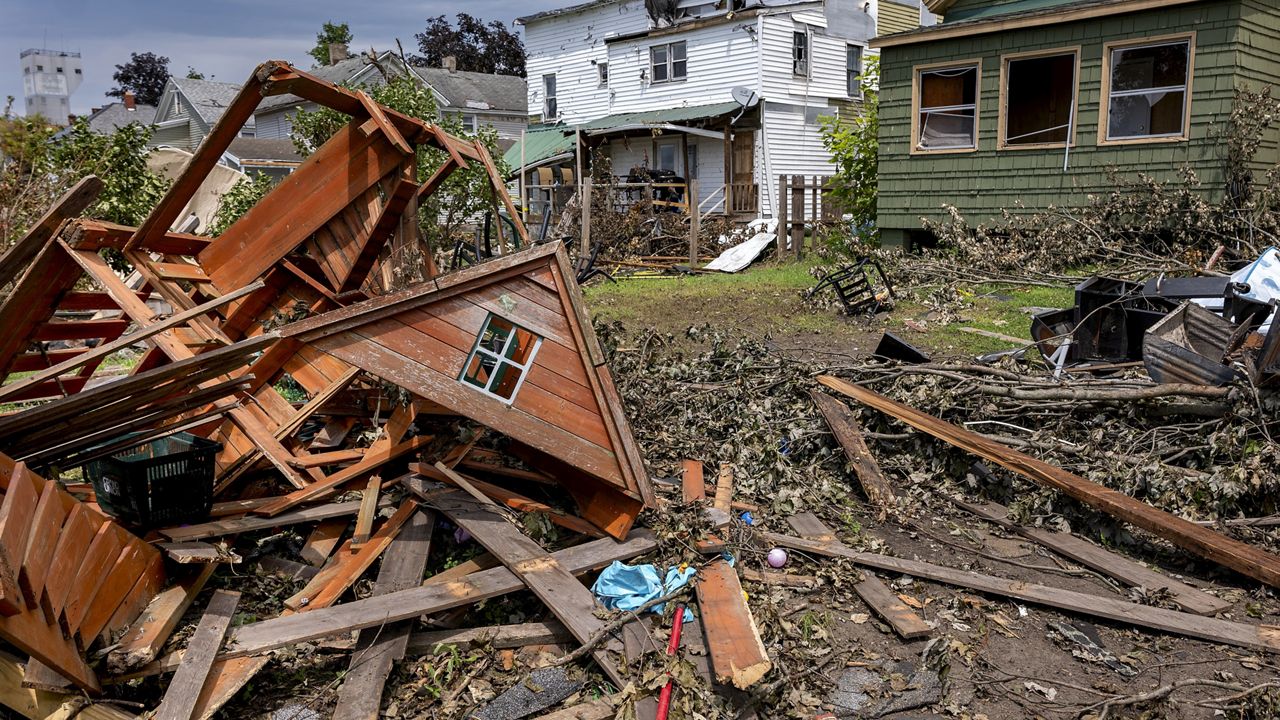President Duma Boko of Botswana Joins Global Center on Adaptation Board – Global Center on Adaptation

Report on the Appointment of President Duma Boko to the Global Center on Adaptation Board
Introduction: Strengthening Leadership for Climate Action and Sustainable Development
On 7 August 2025, the Global Center on Adaptation (GCA) announced the appointment of Advocate Duma Boko, President of the Republic of Botswana, to its Board. This appointment signals a reinforced commitment to addressing the climate crisis through the lens of the Sustainable Development Goals (SDGs), with a particular focus on climate justice, sustainable development, and locally-led adaptation solutions for Africa.
Climate Impacts in Botswana: A Threat to SDG Progress
Botswana is experiencing significant climate change impacts that directly threaten the nation’s progress toward achieving the Sustainable Development Goals. These challenges underscore the urgent need for robust adaptation strategies.
Key Climate-Related Challenges and Affected SDGs:
- SDG 2 (Zero Hunger): Severe and recurring droughts have triggered food insecurity, jeopardizing national food systems and nutritional goals.
- SDG 6 (Clean Water and Sanitation): Rising temperatures, which are increasing faster than the global average, combined with declining water tables, have created significant water stress in urban centers like Gaborone.
- SDG 15 (Life on Land): Widespread land degradation and an intensified risk of desertification threaten Botswana’s terrestrial ecosystems and biodiversity.
- SDG 8 (Decent Work and Economic Growth): The nation’s key economic sectors, including agriculture and tourism, are under direct threat from these climate impacts, potentially reversing development gains.
A Strategic Focus on Adaptation as a Cornerstone of Development
President Boko’s appointment is founded on the principle that climate adaptation is a political and economic imperative for sustainable development. His leadership aims to integrate climate resilience into national and continental development frameworks, aligning with several core SDGs.
Presidential Vision for Adaptation and the SDGs:
- Advancing SDG 10 (Reduced Inequalities): President Boko highlighted that climate change disproportionately affects vulnerable populations, deepening inequality. A focus on climate justice is central to his agenda.
- Achieving SDG 13 (Climate Action): The appointment underscores a commitment to scaling up adaptation solutions as a primary mechanism for climate action, moving beyond mitigation to build resilience.
- Reinforcing SDG 16 (Peace, Justice and Strong Institutions): By joining the GCA Board, Botswana strengthens the governance structures needed to drive the adaptation agenda and ensure national ownership of climate solutions.
As stated by President Boko, “Climate change threatens to roll back decades of progress across Africa… As a country deeply committed to climate resilience and sustainable growth, Botswana stands ready to contribute to this collective effort, to ensure that adaptation is not an afterthought, but a cornerstone of our continent’s development future.”
The Africa Adaptation Acceleration Program (AAAP): A Vehicle for SDG 17
The GCA, in partnership with the African Development Bank, implements the Africa Adaptation Acceleration Program (AAAP). This initiative exemplifies SDG 17 (Partnerships for the Goals) by mobilizing resources, expertise, and political will to integrate adaptation across the continent.
AAAP’s Contribution to the Global Goals:
- The AAAP has already influenced over $17 billion in investments aligned with climate adaptation, directly contributing to resilient infrastructure, sustainable agriculture, and economic diversification (SDG 9, SDG 2, SDG 8).
- The program reframes climate adaptation as a driver of economic transformation and opportunity, rather than solely a response to vulnerability.
- H.E. Macky Sall, Chair of the GCA Board, noted that President Boko’s appointment will strengthen the AAAP, emphasizing that adaptation is “a necessity for survival and prosperity” in Africa.
Professor Patrick V. Verkooijen, President and CEO of the GCA, added that President Boko’s leadership will “sharpen the focus on national ownership, inclusivity, and investment as we work to close the adaptation finance gap and accelerate progress where it is needed most.”
Analysis of Sustainable Development Goals (SDGs) in the Article
1. Which SDGs are addressed or connected to the issues highlighted in the article?
-
SDG 2: Zero Hunger
- The article explicitly mentions that “severe dry spells have triggered food insecurity” in Botswana. It also highlights the Africa Adaptation Acceleration Program’s (AAAP) work in promoting “resilient agriculture,” which directly addresses food production and security challenges posed by climate change.
-
SDG 6: Clean Water and Sanitation
- The text points to significant water-related challenges, stating that Botswana is experiencing “declining water tables” and “stressed water supplies in cities like Gaborone.” President Boko also refers to “water scarcity” as a primary effect of climate change on his people.
-
SDG 13: Climate Action
- This is the central theme of the article. The entire text focuses on the “climate crisis,” “climate change,” and the need for “climate adaptation.” The mission of the Global Center on Adaptation (GCA) and the appointment of President Boko are framed around strengthening global and continental responses to climate impacts.
-
SDG 15: Life on Land
- The article highlights the impact of climate change on terrestrial ecosystems, mentioning “land degradation” and an “intensified the risk of desertification in already arid regions.” President Boko also notes how climate change affects “our ecosystems.”
-
SDG 17: Partnerships for the Goals
- The article is built around a partnership. It describes the GCA as an “international organization” that unites “global leaders” and works through joint initiatives like the “Africa Adaptation Acceleration Program (AAAP)—a joint initiative with the African Development Bank.” This exemplifies the multi-stakeholder partnerships needed to achieve sustainable development.
2. What specific targets under those SDGs can be identified based on the article’s content?
-
SDG 2: Zero Hunger
- Target 2.4: By 2030, ensure sustainable food production systems and implement resilient agricultural practices that increase productivity and production, that help maintain ecosystems, that strengthen capacity for adaptation to climate change, extreme weather, drought, flooding and other disasters and that progressively improve land and soil quality. The article’s focus on “resilient agriculture” to combat “food insecurity” caused by “severe dry spells” directly aligns with this target.
-
SDG 6: Clean Water and Sanitation
- Target 6.4: By 2030, substantially increase water-use efficiency across all sectors and ensure sustainable withdrawals and supply of freshwater to address water scarcity. The mention of “stressed water supplies,” “declining water tables,” and “water scarcity” points to the challenges this target aims to resolve.
-
SDG 13: Climate Action
- Target 13.1: Strengthen resilience and adaptive capacity to climate-related hazards and natural disasters in all countries. The article is fundamentally about this target, with the GCA’s mission being to “promote adaptation to the impacts of climate change” and build “climate resilience.”
- Target 13.2: Integrate climate change measures into national policies, strategies and planning. The GCA’s goal to “integrate adaptation into core economic and development strategies” and President Boko’s commitment to making adaptation a “cornerstone of our continent’s development future” reflect this target.
- Target 13.a: Implement the commitment undertaken by developed-country parties to the United Nations Framework Convention on Climate Change to a goal of mobilizing jointly $100 billion annually by 2020 from all sources to address the needs of developing countries in the context of meaningful mitigation actions and transparency on implementation and fully operationalize the Green Climate Fund through its capitalization as soon as possible. The article’s reference to the need to “mobilize resources” and “close the adaptation finance gap” is directly related to this target.
-
SDG 15: Life on Land
- Target 15.3: By 2030, combat desertification, restore degraded land and soil, including land affected by desertification, drought and floods, and strive to achieve a land degradation-neutral world. The article’s specific mention of “land degradation” and the “risk of desertification” in Botswana connects directly to the language and goals of this target.
-
SDG 17: Partnerships for the Goals
- Target 17.16: Enhance the global partnership for sustainable development, complemented by multi-stakeholder partnerships that mobilize and share knowledge, expertise, technology and financial resources, to support the achievement of the sustainable development goals in all countries, in particular developing countries. The GCA itself, its Board of “global leaders,” and its “joint initiative with the African Development Bank” (the AAAP) are perfect examples of the partnerships described in this target.
3. Are there any indicators mentioned or implied in the article that can be used to measure progress towards the identified targets?
-
For Target 13.1 and 13.a
- Indicator: Amount of investment mobilized for adaptation. The article provides a concrete figure: “Having already shaped over $17 billion in adaptation-aligned investments, the AAAP is shifting the narrative from vulnerability to opportunity.” This serves as a direct indicator of financial resources mobilized for strengthening resilience.
-
For Target 13.2
- Indicator (Implied): Number of countries integrating adaptation into national planning. The article implies this by highlighting Botswana’s “proactive stance on resilience” and its commitment to making adaptation a “cornerstone” of development, positioning the country as an example of national integration.
-
For Target 15.3
- Indicator (Implied): Proportion of land that is degraded. While no figure is given, the article identifies “land degradation” and “desertification” as key threats being experienced in Botswana. Monitoring the extent of these phenomena would be the relevant indicator.
-
For Target 2.4
- Indicator (Implied): Stability of food production under climate stress. The article points to “food insecurity” triggered by “severe dry spells.” Progress would be measured by the ability of the agricultural sector to maintain production and ensure food security despite such climate events.
-
For Target 6.4
- Indicator (Implied): Level of water stress. The mention of “stressed water supplies in cities like Gaborone” and “declining water tables” implies that progress would be measured by improvements in water availability and a reduction in water stress levels.
4. Table of SDGs, Targets, and Indicators
| SDGs | Targets | Indicators Identified in the Article |
|---|---|---|
| SDG 2: Zero Hunger | 2.4: Ensure sustainable food production systems and implement resilient agricultural practices. | Implied: Stability of food supply despite climate events like “severe dry spells.” The article mentions “food insecurity” as a key problem to be solved. |
| SDG 6: Clean Water and Sanitation | 6.4: Substantially increase water-use efficiency and ensure sustainable withdrawals to address water scarcity. | Implied: Level of water stress, measured by factors like “declining water tables” and “stressed water supplies.” |
| SDG 13: Climate Action | 13.1: Strengthen resilience and adaptive capacity to climate-related hazards. 13.2: Integrate climate change measures into national policies. 13.a: Mobilize financial resources for climate action. |
Direct: Amount of adaptation-aligned investment mobilized (“$17 billion”). Implied: Number of countries with integrated national adaptation strategies (with Botswana as an example). |
| SDG 15: Life on Land | 15.3: Combat desertification, restore degraded land and soil. | Implied: Proportion of land that is degraded. The article identifies “land degradation” and “desertification” as key challenges. |
| SDG 17: Partnerships for the Goals | 17.16: Enhance the global partnership for sustainable development. | Direct: The existence of multi-stakeholder partnerships like the GCA and its joint initiative (AAAP) with the African Development Bank. |
Source: gca.org

What is Your Reaction?
 Like
0
Like
0
 Dislike
0
Dislike
0
 Love
0
Love
0
 Funny
0
Funny
0
 Angry
0
Angry
0
 Sad
0
Sad
0
 Wow
0
Wow
0



























;Resize=805#)



















































